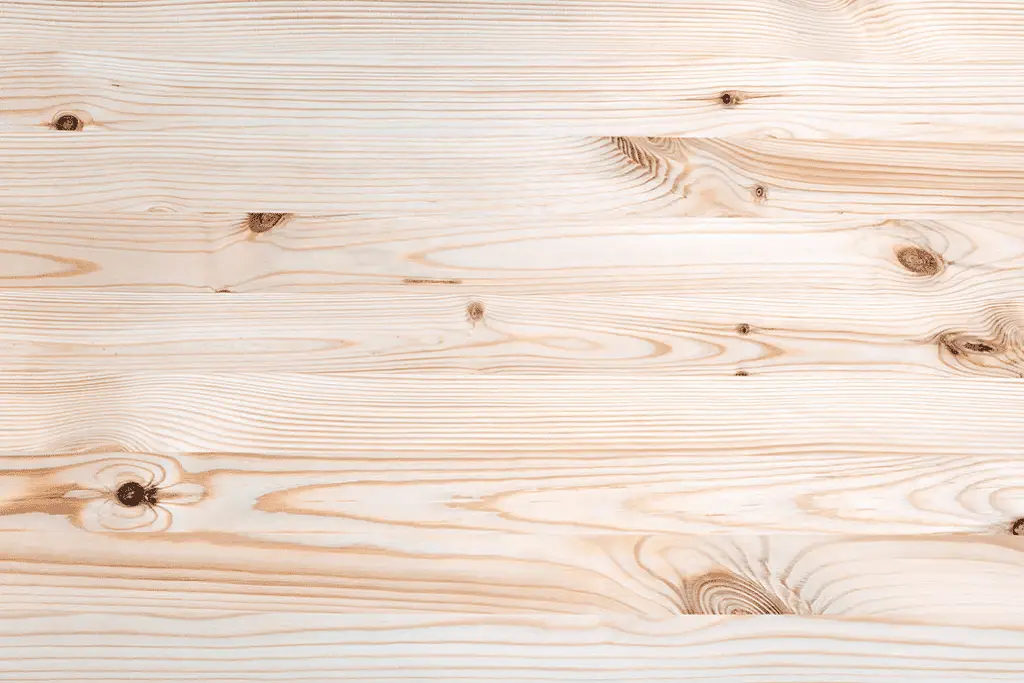Spruce wood refers to the wood that comes from a spruce tree.
Spruce trees are coniferous evergreen trees that belong to the genus Picea, and they are commonly found in the northern hemisphere.
Spruce wood is known for its light color, fine grain, and high strength-to-weight ratio.
It is often used in construction, including for building houses, as well as in the production of paper, musical instruments, and furniture.
Spruce wood is also commonly used for Christmas trees, as the branches are sturdy enough to support ornaments and the needles have a pleasant aroma.
What is Spruce wood?

- Common Name(s): Spruce Pine
- Scientific Name: Pinus glabra
- Distribution: Southeastern United States (coastal plain)
- Tree Size: 65-100 ft (20-30 m) tall, 2-3 ft (.6-1 m) trunk diameter
- Average Dried Weight: 33 lbs/ft3 (525 kg/m3)
- Specific Gravity (Basic, 12% MC): .42, .52
- Janka Hardness: 700 lbf (3,110 N)
- Modulus of Rupture: 10,300 lbf/in2 (71.0 MPa)
- Elastic Modulus: 1,405,000 lbf/in2 (9.69 GPa)
- Crushing Strength: 5,660 lbf/in2 (39.0 MPa)
- Shrinkage: No data available
Advantages of Spruce Wood:
1. Lightweight: Spruce wood is light, making it easy to transport and work with.
2. Strength: Despite its lightweight, spruce has a high strength-to-weight ratio, making it suitable for load-bearing structures.
3. Acoustic properties: Spruce wood has excellent resonance, making it a popular choice for musical instruments like guitars and violins.
4. Affordability: Spruce is relatively inexpensive compared to other wood types, making it an attractive option for various applications.
5. Sustainability: Spruce is a fast-growing tree, making it a renewable and eco-friendly resource.
Disadvantages of Spruce Wood:
1. Durability: Spruce wood is less durable than hardwoods, making it more susceptible to decay, rot, and insect damage.
2. Moisture sensitivity: Spruce is prone to warping and swelling when exposed to moisture, which can compromise its structural integrity.
3. Aesthetics: Spruce wood has a relatively plain appearance, which may not be4 as visually appealing as other wood types.
4. Softness: Spruce is a softwood, making it more prone to dents and scratches compared to hardwoods.
5. Limited outdoor use: Due to its susceptibility to moisture and decay, spruce wood is not ideal for outdoor applications without proper treatment.
Common uses of Spruce wood
- Construction: Spruce wood is commonly used in construction for its strength, durability, and light weight. It is used for everything from framing to flooring to roofing.
- Paper: Spruce wood fibers are often used in the production of paper due to their long fibers, which make for a strong and smooth paper product.
- Musical instruments: Spruce wood is highly valued for its acoustic properties, and it is commonly used in the construction of musical instruments such as guitars, violins, and pianos.
- Furniture: The light color and fine grain of spruce wood make it a popular choice for furniture, especially for pieces that are meant to have a simple and natural look.
- Carving: Spruce wood is soft and easy to carve, making it a popular choice for carving projects such as figurines or decorative items.
- Fuel: Spruce wood can be used as a fuel source, either in the form of firewood or as wood chips used in biomass energy production.
- Pulp: Spruce wood is also used in the production of pulp, which is used to create a variety of products including paper and cardboard.
- Christmas trees: Spruce trees are often used as Christmas trees due to their sturdiness and pleasant aroma.
- Siding: Spruce wood is sometimes used for exterior siding due to its durability and resistance to decay.
- Boat building: The strength and light weight of spruce wood make it a popular choice for boat building, especially for smaller boats or those intended for racing.





